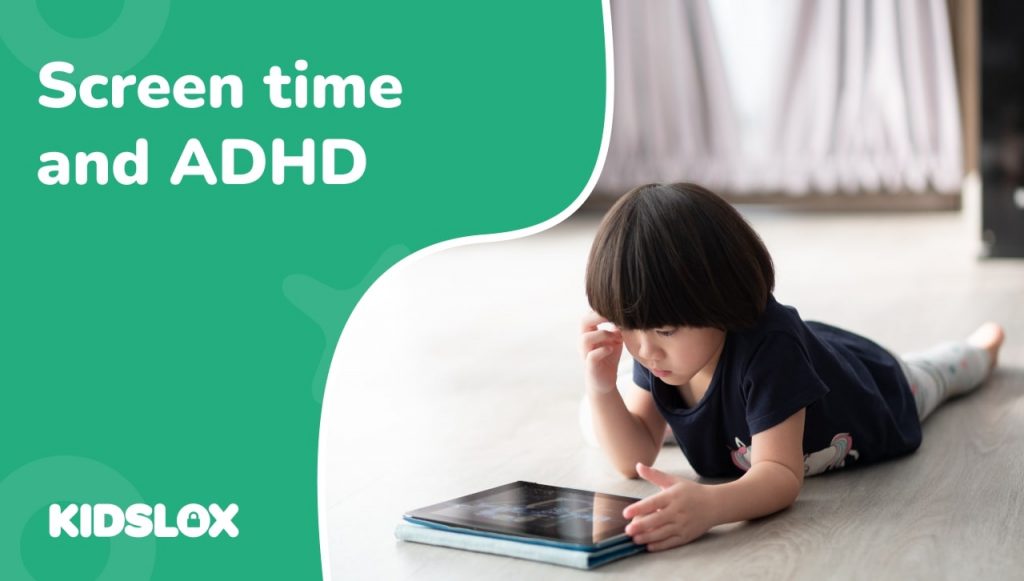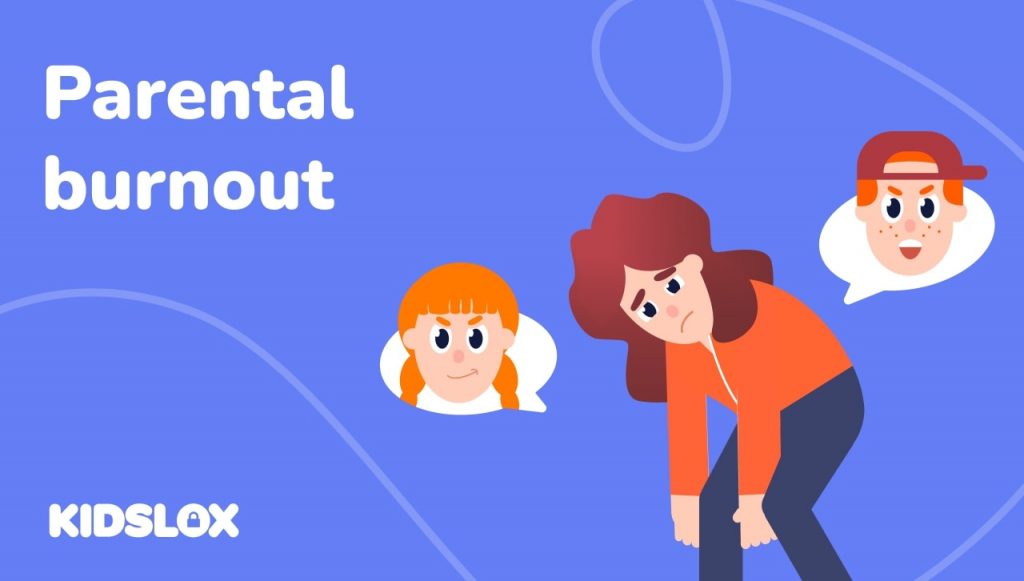What does the research say about the problems associated with electronic devices and children’s attention?
ADHD and screen addiction, what’s going on?
Attention Deficit Hyperactivity Disorder (ADHD) is a developmental disorder that affects a child’s behavior and ability to pay attention and control impulsive actions. It is often diagnosed in childhood and can present with the following signs:
- Being forgetful
- Fidgeting a lot
- Being overly talkative
- Having trouble with turn-taking
- Problems with friendships and forming relationships
- Risk-taking behavior
- Decreased attention span
A healthy lifestyle with a balanced diet, good sleep patterns, and regular exercise is really important for all children, but especially so for children with ADHD. The Center for Disease Control highlights the importance that caregivers need to pay on these things in children with ADHD, and one of these elements includes limiting the amount of time that they spend in front of a screen.
Between 2003-11, diagnoses of ADHD in American kids increased by 43%. Many commentators point to our ever-increasing dependency on screens and electronics as one of the potential drivers of this huge rise.
ADHD and screen time research
A pivotal study of 2,000 pre-school-aged children published in the journal, PLOS ONE, found that increased screen time was associated with problems in attention. According to the data, by the age of 5, the children who had spent more than 2 hours a day watching screens, were almost eight times more likely to meet the criteria for a diagnosis of ADHD.
Experts analyzing noted that it was difficult to establish cause and effect from the data, but highlighted how screen time can distract children from the activities they need to do to build healthy social skills. Screens are so often fillers for boredom, and as they are highly engaging and easily accessible, children can quickly become dependent on them to feel stimulated.
The potential cause and effect of screens and ADHD were explored further in two studies from New Zealand. The first, a longitudinal study with cohorts in the Growing Up in New Zealand program, showed no link between increased screen time and ADHD symptoms. Further data showed that there may be a relationship between the number of hours that parents allow children who exhibit ADHD behaviors to use screens. This could be attributed to a number of factors, not least the challenges these parents face raising children who are developmentally atypical. Screens can become a crutch that provides peace and order for the caregiver.
This hypothesis was strengthened by reports from caregivers parenting children with ADHD during lockdowns. According to the specialist magazine, ADDitude, its readers reported that their screentime increased by 85% during the pandemic.
Further to this, during this time, almost 85% of caregivers surveyed by the magazine, reported behavioral changes, including emotional dysregulation, decreased motivation for academic and non-screen-based activities, and more frustration – particularly when screens were removed.
What are the pros and cons of children with ADHD using screens?
In an interview with Healthline, Mary Jane Weiss, PhD, BCBA-D, LABA, of Endicott College, notes that there can be positives of children with ADHD engaging in screen-based activities. These include:
- An increased focus on one particular activity of interest.
- If a child with ADHD has an attachment to a particular video game or other online activity, it can help give them something to focus on for longer periods of time.
- Visual learning advantages.
- We all learn differently. For visual learners, screen-based educational activities can help a person digest and retain information more effectively than if they were relying on methods that didn’t have that interactive element. With children who have ADHD, if screens enable them to focus for longer periods than they can typically manage, this can have advantages.
- Rewards and motivational tactics
- If a child forms an attachment to a particular game or spends time on a social site, using this as a mechanic to reward them for chores completed or other good behavior. Sometimes this can prove to be a positive tactic that parents can use to motivate their children to do the important tasks first.
- Socializing
- There is a huge social element to screen use, including social media and chatting to friends on gaming sites. For children with ADHD, who may struggle to develop functional friendships with peers, it can give them an outlet to form relationships and interact with others in a more positive way,
While there are some pros to screen use generally, most experts agree that the negative impact of screen time can be additionally harmful to children with ADHD and this includes:
Dopamine dependency
Researchers know that screens can cause a negative dopamine feedback loop in children’s brains. Screentime can flood children’s brains with the ‘feel good’ neurotransmitter, and while dopamine itself isn’t ‘addictive’, the chemical reactions can be overwhelmingly powerful and form habits in a child’s developing brain.
Dopamine feedback loops are especially significant in children with ADHD. Scientists know that children with ADHD seek these stimulating brain exchanges through their behavior more frequently than their peers. Lower levels of the chemical in their brains naturally, leaves them looking for the ‘hit’ in other ways, and screens can become an addictive part of this behavior.
Writing in The New York Times, Perri Klass MD contends that many parents confuse the ability of children to focus on screens for hours as a sign that they don’t have an attention disorder. However, the way that children with ADHD can spend so much time at the computer, and are unable to concentrate in other areas of their life can be one of the telltale signs of the condition.
Further to this, Klass notes at least one study which looked at how diagnosed children who were being treated with the dopamine enhancing medication, Ritalin. The children in this study ended up playing video games less, leading scientists to hypothesize that screens are a way in which these children ‘self-medicate’ their condition.
Disrupted sleep
Most experts agree that screens in children’s bedrooms are a no-no. But for children with ADHD, the impact on their sleep can be even more profound.
Studies have shown that screen time before bed can exacerbate ADHD symptoms by disrupting sleep and leading to more behavioral issues during waking time.
ADHD symptoms form a complex, interwoven web. Diet, exercise, and sleep are so closely linked, and in children with ADHD, any disruptions to one area can have a knock-on effect on the others. Parents who have these children will know how important it is to balance lifestyle and wellbeing to ensure the best outcomes all around for their child.
Poor concentration
Studies show that preschoolers who spend more than two hours per day watching screens are more likely to have attention issues by age five.
According to Michael Manos, director of the ADHD Center for Evaluation and Treatment at the Cleveland Clinic, the instant and constant gratification that screens provide can impact children’s perception of the ‘real world’, where things happen at a slower pace. This in turn makes the world seem dull and boring, with screens and electronics the flashy, exciting alternative to provide stimulation.
In turn, the more time spent in front of the screen, the harder it is for children to then concentrate on necessary, and less ‘exciting’ tasks in real life. This is even more impactful on children with ADHD, who naturally suffer from shorter attention spans and have difficulty focusing and concentrating on tasks.
Central nervous system overload
One particularly worrying study by JAMA Pediatrics concluded that children who spent long periods of time using screens had less white matter – the areas involved in learning ability and potentially, communication between areas of the brain.
‘Electronic Screen Syndrome’ or ESS is the term some psychologists use to explain the dysregulation that many people report as a result of screen usage, including the inability to control their attention span, and level of arousal to different situations.
Writing in Psychology Today, Victoria L. Dunckley M.D., argues for the existence of ESS as a replacement for the misdiagnosis of ADHD in some children.
Dunckley claims that elevated levels of aggression, the decreased ability to concentrate and poor social interactions can often be caused by over-exposure to screen-based activities that put our central nervous systems into a ‘revved-up’ state.
If ESS does exist and receive a more formalized set of diagnosable criteria, it is not hard to see how the impacts it has on a person’s wellbeing could be even more negative for someone already diagnosed with ADHD.
Does screentime cause ADHD?
Most research points to genetics as the primary cause of ADHD and although many studies show a correlation between increased screentime and ADHD, it’s important to note that there is little in the way of causation.
Do screens make ADHD worse?
This is a common question that concerned parents ask. If the answer is yes, then limiting the amount of time a child spends in front of a screen could be beneficial.
Studies show that for all children, not just those living with ADHD, screen time can make attention, behavioral, and focus issues worse.
While there is no proven cause and effect, it seems that children with ADHD can often be more susceptible to the lure of electronic devices. In turn, these children may suffer more from the negative effects associated with spending a lot of time in front of screens compared to their developmentally typical peers.
Managing screen time in children with ADHD
Screens and electronics are a crutch for many families, and caregivers who have a child with ADHD face additional pressures. Limiting screen time is beneficial for all children, including those living with the disorder. Here are some suggestions on how to manage it at home.
- Make a family media plan
- Get the whole family involved in drawing up the plan that sets out reasonable time limits, time slots, and the types of screen time that everyone experiences. There are lots of templates and guides on how you can do this with your family, including this great resource from the American Academy of Pediatrics (AAP)
- Stick to the guidelines
- Researchers from AAP have developed a set of guidelines that help parents determine how much screentime is appropriate for children in the following age brackets:
- Before age 2, no screen time at all. Only video calls.
- Between the ages of 24 months and 5 years. Only one hour a day of quality programming. Research suggests that ‘co-viewing’ during these interactions is more beneficial for children too.
- Ages 5 and up. No more than two hours of screens a day, excluding homework and scholastic activities.
- Researchers from AAP have developed a set of guidelines that help parents determine how much screentime is appropriate for children in the following age brackets:
- Make sure the content is appropriate
- If your media plan includes video games always ensure that they are appropriate for your child’s age and personality. Avoid violent games and encourage more creativity-based, world-building, and educational formats.
- If your media plan includes video games always ensure that they are appropriate for your child’s age and personality. Avoid violent games and encourage more creativity-based, world-building, and educational formats.
- Little and often
- Some researchers suggest that children with ADHD benefit more from shorter bursts of time on devices over prolonged periods.
- Schedules and tech tools
- Make the most of digital tools to help manage your preferences and agreed time limits on screen time. Kidslox can help you to block sites, set limits, and shut down activities when it’s time to put the screens away.
- Make the most of prompts and countdowns
- Manage expectations and meltdowns by giving your child a fair warning time that the screen time slot is about to end. Prompts, including countdown clocks, can help aid acceptance of this in children who struggle with this transition.
- Get outdoors and move
- Some researchers believe that there is a positive benefit to following up screentime immediately with physical activity. If your circumstances allow, why not go for a family walk in the fresh air after screen time ends to unwind in nature. This can be especially beneficial before bedtime.
- Some researchers believe that there is a positive benefit to following up screentime immediately with physical activity. If your circumstances allow, why not go for a family walk in the fresh air after screen time ends to unwind in nature. This can be especially beneficial before bedtime.
- No screens in the bedroom
- Most experts agree that this is a big no-no for all kids. Buy a traditional alarm clock to replace the phone and remove devices from the area completely.
- Screen-free before bed
- Children with ADHD can really struggle with sleep and winding down for bed. Screen time has been shown to inhibit the brain’s ability to naturally prepare for bedtime. Make your house completely screen-free at least 30 mins before bedtime, and ideally an hour.
If you’re worried that your child is exhibiting signs of ADHD, always seek the advice of a professional. The American Professional Society of ADHD and Associated Disorders and The Attention Deficit Disorder Association have a variety of further information to support parents, caregivers, and professionals.





